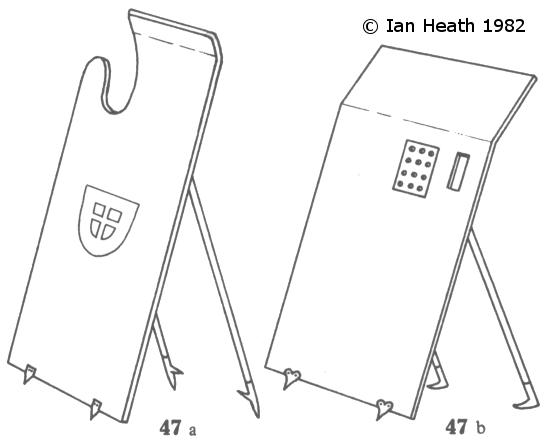PAVISES
An extract from Armies of the Middle Ages, Volume 1
by Ian Heath

47. PAVISES
The 2 pavises depicted here are from a ms. of 1405 and are representative of the heavy-duty type normally used in siege-work.
47a is the height of a man and made of iron or else thick wood faced with iron.
Otherwise pavises were normally constructed of wooden slats glued together and faced with painted or varnished hide, decoration (often ornate)
usually taking the form of coats-of-arms or badges of their town or lord, often in the form of an escutcheon.
Note the wood or steel props and the slit and metal grille on 47b for observation.
On the few occasions where we find crossbowmen actually using
pavises on the battlefield it is invariably the lighter type described under figure 48.
One exception may have been at Second St Albans in 1461, where the Earl of Warwick had intended to fight from a carefully prepared defensive position.
He had dozens of long nails driven through his archers’ pavises with the intention that once they had exhausted their arrows
the archers could lay the pavises flat and thus provide a barrier of caltrops against the Lancastrians' attack.
[Based on A Pavise from Konrad Kyeser's military treatise 'Bellifortis', 1405]
See Pavises in Chronique de Charles VII by Jean Chartier, 1470-1480AD, BnF MS Français 2691
Next: 48. CROSSBOWMAN, 15th CENTURY in Armies of the Middle Ages, Volume 1 by Ian Heath
| |

